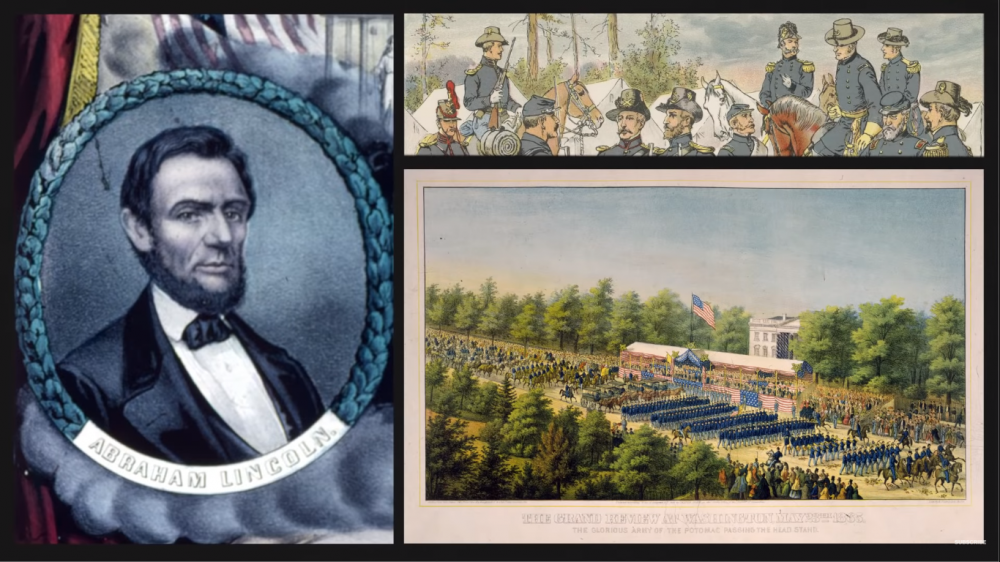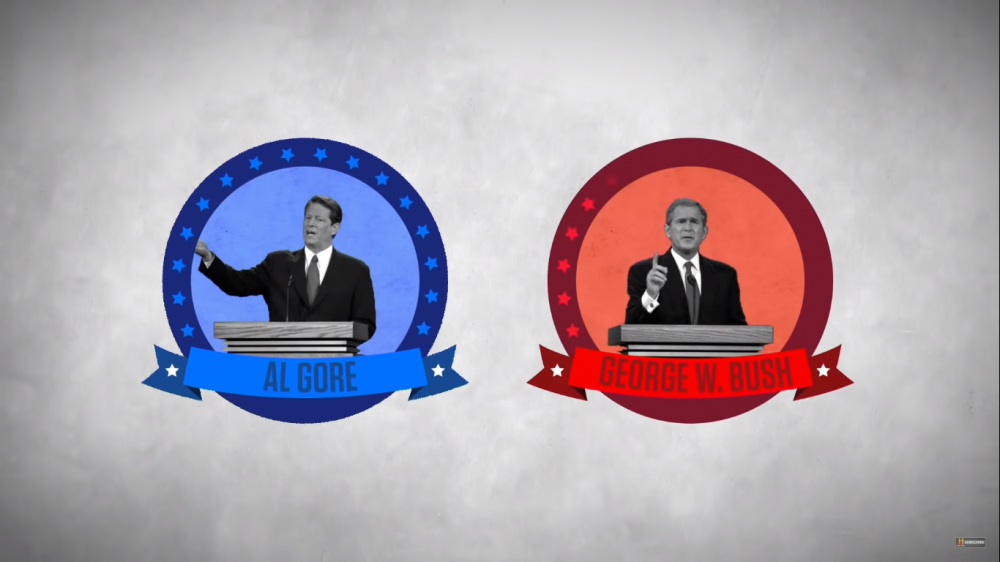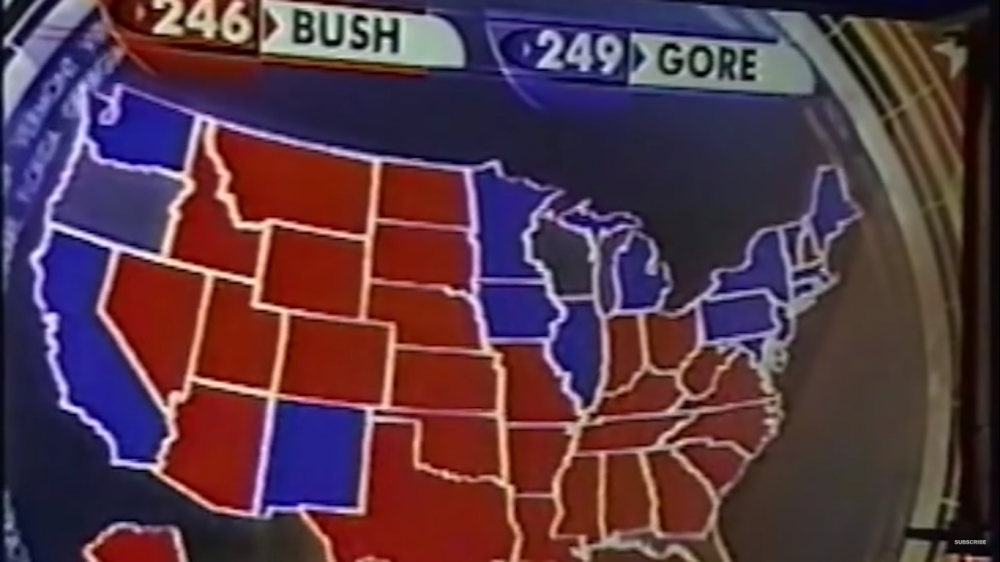Color of the Republicans and color of the Democrats
For Americans today, red and blue are closely associated with the Republican and Democratic parties. But this was not always the case — the colors began to be associated with the parties only after the 2000 elections.
 That's what the election results looked like on American television in the era of black and white screens — not very informative, you might agree. Photo: www.youtube.com/watch?v=mPKaGrYGcT8
That's what the election results looked like on American television in the era of black and white screens — not very informative, you might agree. Photo: www.youtube.com/watch?v=mPKaGrYGcT8
Everything changed with the advent and popularization of color television in the late 1960s and early 1970s.
To understand where the «blue» and «red» states came from, we need to go back to the time when the media first used color maps to report the election results. At the time of the 1972 presidential election, most U.S. housewives were already watching TV shows on color TVs. Naturally, each of the three major TV companies (NBC, CBS and ABC) broadcasted programs about the election race in color. To differentiate itself from the competition, CBS created the first color-coded election map in American television history.
 Map of results of presidential elections. The red indicates states that supported the Democrats; the blue indicates the Republicans. Photo: https://www.youtube.com/watch?v=1ZdoLwxB3lw
Map of results of presidential elections. The red indicates states that supported the Democrats; the blue indicates the Republicans. Photo: https://www.youtube.com/watch?v=1ZdoLwxB3lw
Soon, CBS's innovation began to be used on other television channels, and the very division into colors quickly took root among the masses.
But why blue for Republicans and red for Democrats? And although today these combinations may seem strange, then it was a normal phenomenon. Ron Alvin, editor-in-chief of Washington Desk, said CBS chose blue for the Republicans because it is associated with the Union Army led by Republican Abraham Lincoln.  Photo: haikudeck.com
Photo: haikudeck.com
The red color of the Democrats, in turn, was associated with the Left, primarily with the Communist parties.
 Photo: posterplakat.com
Photo: posterplakat.com
From election to election, the colors have repeatedly changed from party to party. Republicans turned red, Democrats turned blue, and vice versa. By 1996, ABC and CBS had used the familiar democratic blue and republican red on their maps for several election cycles. At the same time, NBC continued to use reverse colors, i.e. red for Democrats and blue for Republicans.
#fffbce;">Video from the 1980 U.S. presidential election: https://www.youtube.com/embed/PsDe-8cOSYY
Elections in 2000
Traditionally, neither the Democratic nor the Republican Party had a permanent color identity. But after the 2000 elections, red began to be associated with the Republicans, and blue with the Democrats.


Photo: https://www.youtube.com/watch?v=D-nR_hmS6V0
This time, all TV channels used the same color scheme so as not to confuse viewers — the states won by Republican candidate George Bush were painted red, and the states won by Democratic candidate Al Gore were painted blue. Thus, the so-called «red» and «blue» states appeared.
Due to weeks of controversy over the election results, these color associations became firmly entrenched in parties and began to be used in the following years. Although assigning color to political parties is unofficial and informal, the media cover the activities of these political organizations using appropriate colors. The parties themselves and their candidates also began to give preference to red and blue.
B. Obama mentioned the division of the United States into «red» and «blue» states: https://www.youtube.com/watch?v=yJzjyYL8l5Y
Now Americans use red and blue terminology in everyday life — from political symbols to coffee brands.